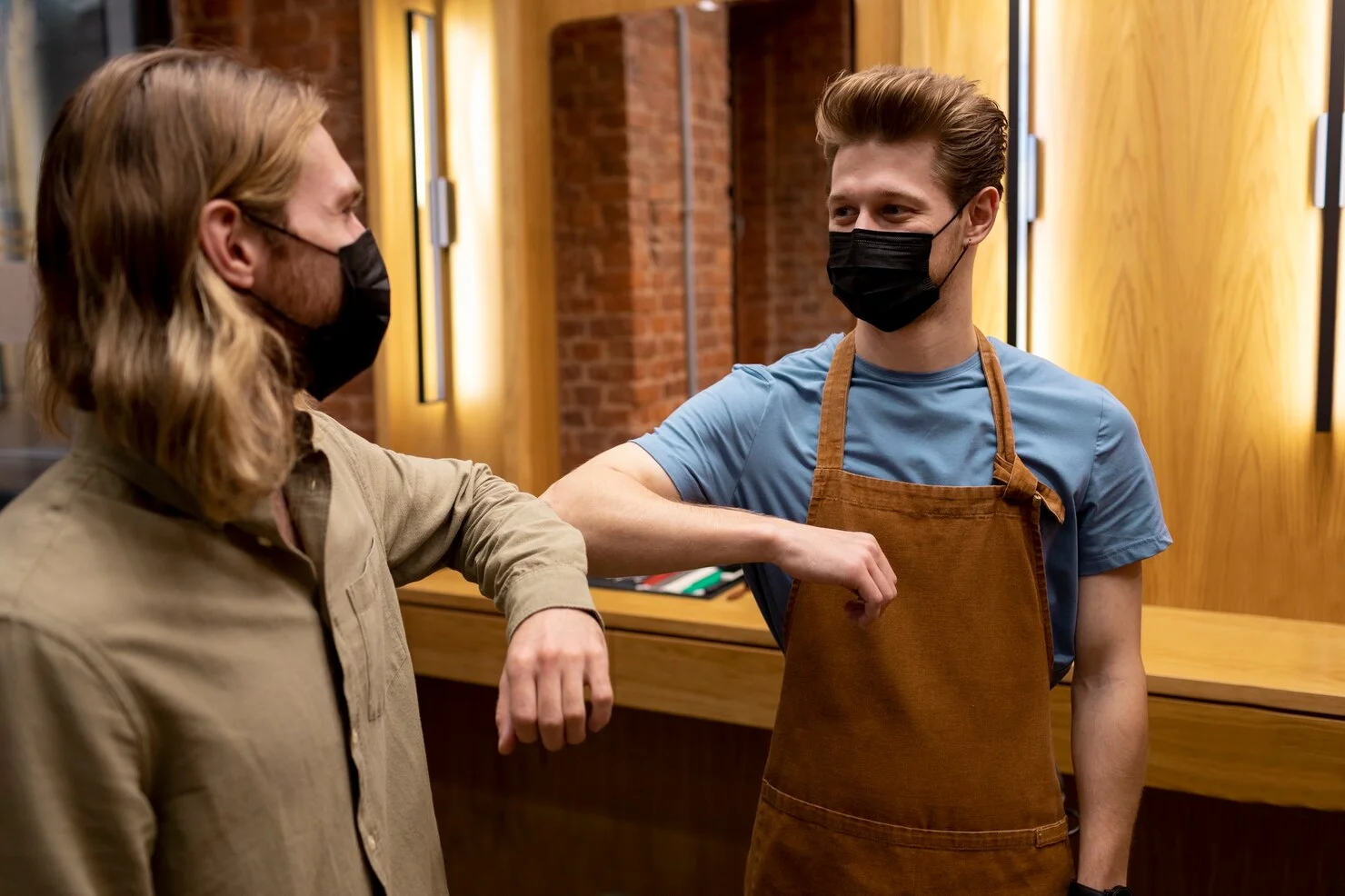FOOD & DRINKS
Diagnosed with Shigella After Visiting Longhorn Steakhouse? Health Department Urges Swift Action

After several cases of Shigella were linked to Longhorn Steakhouse, health officials are urging anyone who recently dined at the restaurant and is experiencing symptoms to take immediate action. Shigella is a highly contagious bacterium that causes severe gastrointestinal issues, such as diarrhea, stomach cramps, and fever. In response to the outbreak, local health departments are collaborating with the restaurant chain to contain the spread of the disease and prevent further infections.
Health authorities emphasize the importance of seeking prompt medical care, as untreated Shigella infections can lead to more serious complications. At the same time, efforts are underway to trace the source of the contamination and ensure that necessary measures are in place to protect the public. This situation serves as a critical reminder of the need for rigorous food safety practices in preventing the spread of foodborne illnesses.
The Rise of Shigella Cases: What Sparked the Outbreak at Longhorn Steakhouse?
The Shigella outbreak at Longhorn Steakhouse began with a sudden spike in illness reports from patrons. Health officials have traced the bacteria to the Fairview Heights location, but questions remain about how the outbreak started. Was it an isolated incident of food contamination or a breakdown in hygiene protocols? Investigators are looking into food handling practices, employee health, and sanitation methods to identify what went wrong.
Understanding how the bacteria was introduced is critical in preventing future incidents. As the investigation continues, officials are urging diners to be cautious and report any symptoms immediately.
From Restaurant to Hospital: How Quickly Shigella Can Spread
Shigella is notorious for its ability to spread rapidly, particularly in environments like restaurants where food and human contact are plentiful. In the case of Longhorn Steakhouse, even a single mishap in food handling can expose numerous patrons to the bacteria. Shigella thrives in unsanitary conditions, making it easy to transmit through contaminated surfaces, utensils, or food.
The outbreak serves as a reminder of how fast foodborne bacteria can escalate from a single case to dozens of people requiring medical attention. In this context, timely intervention is key to minimizing the number of those affected.
The Health Department’s Warning: Early Symptoms You Shouldn’t Ignore
One of the most important messages from health officials in this outbreak is to take early symptoms seriously. Mild diarrhea or stomach cramps could be easy to overlook, but these early signs can quickly progress into more severe gastrointestinal distress. Health departments are urging anyone who dined at Longhorn Steakhouse and develops symptoms to seek medical help immediately, as early detection is critical.
Even if the symptoms seem minor, they can lead to more serious health problems, especially for those with weakened immune systems, children, and the elderly. Quick action can reduce the risk of complications and prevent further spread of the infection.
Behind the Scenes: How Health Officials Investigate an Outbreak
When a foodborne illness outbreak occurs, health officials spring into action, conducting detailed investigations to trace the origin of the bacteria. In the case of the Shigella outbreak linked to Longhorn Steakhouse, investigators are conducting interviews with diners, collecting samples, and inspecting the restaurant’s food handling and sanitation practices.
These investigations often involve collaboration between local health departments, food safety experts, and even the Centers for Disease Control and Prevention (CDC) to determine how the bacteria spread and to contain the outbreak quickly. Understanding the process behind these investigations helps the public appreciate the measures taken to protect their health.
Longhorn Steakhouse’s Hygiene Practices: Are They Enough to Prevent Future Outbreaks?
Longhorn Steakhouse has been scrutinized for its hygiene practices in the wake of the Shigella outbreak. While the restaurant chain is taking corrective measures, such as deep cleaning and employee retraining, many are asking if these actions are sufficient to prevent another outbreak. Food safety protocols, including proper handwashing, cooking, and food storage, are essential in preventing bacteria like Shigella from contaminating meals.
There is still uncertainty about whether it is necessary to introduce further measures, such as increasing the frequency of health inspections or enforcing stricter employee health screenings, in order to guarantee the safety of diners in the future.
What Should Diners Do If They Suspect They’ve Been Exposed?
If you suspect you have been exposed to Shigella after dining at Longhorn Steakhouse, there are several steps you should take. First, monitor your symptoms closely. If you experience diarrhea, fever, or stomach cramps, contact a healthcare provider immediately for testing and treatment. Second, it’s important to stay hydrated, as Shigella can cause dehydration quickly, especially in children and the elderly.
Additionally, report your illness to the local health department to help officials track the Shigella food poisoning outbreak and gather critical information. Acting quickly can protect not only your health but also help stop the bacteria from spreading to others.
Lessons from the Outbreak: How Restaurants Can Strengthen Their Defenses Against Foodborne Illness
The Shigella outbreak at Longhorn Steakhouse highlights the importance of robust food safety measures in the restaurant industry. To prevent future outbreaks, restaurants must not only comply with standard hygiene practices but also go beyond the basics. This could include regular food safety audits, real-time monitoring of kitchen cleanliness, and stringent checks on employee health before shifts begin.
Restaurants can minimize the chances of contamination and uphold their reputation by consistently implementing these measures. Additionally, they can prioritize the safety of their customers by protecting them from potential foodborne illnesses like Shigella.
How the Public Can Help: Reporting and Staying Informed During an Outbreak
While health officials and restaurants play key roles in managing an outbreak, the public can also help by staying informed and reporting any suspected cases of foodborne illness. During the Shigella outbreak, those who suspect they have been affected should follow health department updates, cooperate with interviews, and provide details about their dining experience.
Public awareness and vigilance are essential in halting the spread of foodborne illnesses. Sharing timely information and staying updated on health department notifications can help individuals protect themselves and those around them.
FOOD & DRINKS
Everything About Pollaste

Pollaste, a delightful poultry dish, offers a tantalizing fusion of flavors and textures that have delighted palates for generations. Originating from the rustic kitchens of Europe, Pollaste has evolved into a versatile culinary delight appreciated worldwide. In this guide, we’ll explore the origins, ingredients, preparation methods, and cultural significance of Pollaste, along with tips for cooking the perfect dish.
Introduction to Pollaste
What is Pollaste?
Pollaste, derived from the Estonian word for chicken, is a traditional poultry dish that typically features chicken marinated in a flavorful blend of herbs and spices before being roasted or grilled to perfection.
Origin and History
Pollaste traces its roots back to the countryside kitchens of Estonia, where resourceful cooks utilized locally available ingredients to create hearty and satisfying meals. Over time, P,ollaste gained popularity across Europe and eventually found its way onto international menus, captivating food enthusiasts with its robust flavors and tender texture.
Ingredients for Making Pollaste
Main Ingredients
The key ingredients for preparing P,ollaste include fresh chicken, olive oil, garlic, lemon juice, and a selection of herbs such as rosemary, thyme, and sage.
Seasonings and Spices
To enhance the flavor profile of Pollaste, chefs often incorporate a variety of seasonings and spices such as paprika, cumin, coriander, and chili powder.
Preparation Steps
Cleaning and Trimming
Before marinating the chicken, it’s essential to clean and trim it properly to remove any excess fat or impurities.
Seasoning
The secret to flavorful P,ollaste lies in the marinade, which typically consists of olive oil, garlic, lemon juice, herbs, and spices. Allow the chicken to marinate for at least a few hours or overnight to infuse it with maximum flavor.
Cooking Methods
Pollastes can be cooked using various methods, including roasting, grilling, or even slow cooking. Each method offers a unique texture and flavor profile, allowing chefs to tailor the dish to their preferences.
ALSO READ: KAMPYO ROLL: WHAT IS KAMPYO IN SUSHI
Variations of Pollaste
Regional Variations
Different regions have their unique take on Pollaste’s, incorporating local ingredients and culinary traditions to create distinctive flavors.
Cultural Adaptations
Pollaste has inspired numerous cultural adaptations, with chefs around the world putting their spin on this classic dish by experimenting with different seasonings and cooking techniques.
Health Benefits of Pollaste
Lean Protein Source
P,ollaste is an excellent source of lean protein, making it a nutritious option for those looking to maintain a balanced diet.
Nutritional Value
In addition to protein, P,ollaste also provides essential vitamins and minerals such as iron, zinc, and B vitamins, contributing to overall health and well-being.
Popular Pollaste Recipes
Traditional Recipes
Traditional Pollaste’s recipes often highlight the simplicity of ingredients and the importance of proper seasoning and cooking techniques to achieve optimal flavor.
Modern Twists
For those looking to put a contemporary spin on Pollaste, modern recipes often incorporate innovative ingredients and cooking methods to create exciting new flavor combinations.
Pairing Pollaste with Side Dishes
Salad Options
Pairing Pollaste’s with a refreshing salad can provide a satisfying contrast to the rich flavors of the dish, offering a light and balanced meal option.
Starches and Grains
For a more substantial meal, consider serving Pollaste with roasted potatoes, couscous, or rice to complement the savory flavors of the dish.
ALSO READ: DECODING ÇECIIR: AN INTRODUCTORY GUIDE
Serving Suggestions
Garnishes and Sauces
Garnishing P,ollaste with fresh herbs such as parsley or cilantro adds a pop of color and freshness to the dish, while a drizzle of homemade sauce can enhance its flavor profile.
Presentation Tips
When serving P,ollaste, presentation is key. Arrange the chicken pieces neatly on a platter and garnish with decorative accents to create an inviting and visually appealing dish.
Pollaste in Different Cuisines
International Influence
Pollaste’s versatility has made it a popular choice in various cuisines around the world, with chefs incorporating local ingredients and cooking techniques to create unique and exciting dishes.
Fusion Dishes
The fusion of flavors and culinary traditions has given rise to innovative Pollaste’s dishes that blend elements of different cuisines, offering a multicultural dining experience.
Pollaste Etiquette and Traditions
Dining Customs
In many cultures, Pollaste is enjoyed as part of festive gatherings and special occasions, where it serves as a centerpiece dish symbolizing warmth, hospitality, and abundance.
Special Occasions
Whether it’s a family dinner or a celebratory feast, Pollaste’s has a long-standing tradition of bringing people together and creating cherished memories around the dining table.
ALSO READ: CASSASSE: A CULINARY JOURNEY THROUGH HISTORY, TECHNIQUES, AND RECIPES
Tips for Cooking Perfect Pollaste
Temperature Control
Maintaining the right cooking temperature is crucial for achieving tender and juicy P,ollaste. Use a meat thermometer to ensure the chicken is cooked to perfection without drying out.
Timing
Timing is everything when it comes to cooking P,ollaste. Be mindful of cooking times and avoid overcooking the chicken to preserve its delicate texture and flavor.
Conclusion
In conclusion, Pollaste is more than just a poultry dish—it’s a culinary journey steeped in tradition, flavor, and cultural significance. Whether enjoyed as a comforting family meal or a gourmet delicacy, P,ollaste continues to captivate taste buds and inspire culinary creativity around the world.
ALSO READ: DISCOVERING THE RICH HISTORY AND CULTURAL SIGNIFICANCE OF CEVIIRI
FAQs
What is Pollaste?
Pollaste is a traditional poultry dish originating from Estonia, featuring chicken marinated in herbs and spices, then roasted or grilled to perfection.
What are the key ingredients in Pollaste?
The main ingredients include fresh chicken, olive oil, garlic, lemon juice, and herbs like rosemary, thyme, and sage.
How can I cook Pollaste?
Pollaste can be roasted, grilled, or slow-cooked, each method offering a unique texture and flavor profile.
What are some regional variations of Pollaste?
Different regions put their spin on Pollastes by incorporating local ingredients and culinary traditions, resulting in unique flavor variations.
What are the health benefits of Pollaste?
Pollastes is a lean protein source, rich in essential vitamins and minerals like iron, zinc, and B vitamins, supporting overall health and well-being.
FOOD & DRINKS
FPO Corn: Transforming Maize Trade for Farmers

Introduction to FPO Corn
Imagine a world where farmers take control of their own destiny, transforming the way they trade maize. FPO corn is paving the way for this revolution. It’s not just about growing crops anymore; it’s about creating opportunities and empowering communities. With the right support and resources, farmers are stepping away from traditional limitations and unlocking new potentials in maize markets.
This groundbreaking approach is reshaping the landscape of agriculture, offering solutions that address long-standing challenges faced by farmers. The shift towards FPO (Farmer Producer Organizations) corn signifies more than just a change in trading practices — it’s an evolution geared toward sustainability, profitability, and collective growth.
Are you ready to explore how FPO corn is redefining maize trade? Let’s dive into what makes this movement so impactful for farmers everywhere.
The Current State of Maize Trade for Farmers
Maize trade has been a vital source of income for farmers worldwide. However, many smallholders face significant barriers in accessing markets. Fluctuating prices and lack of bargaining power often leave them at a disadvantage.
In recent years, global demand for maize has risen, creating opportunities for producers. Yet, the benefits aren’t always reaching those who need it most. Middlemen frequently dominate the supply chain, squeezing margins and impacting farmer livelihoods.
Farmers are also grappling with climate challenges that affect yields and crop quality. This unpredictability makes trading even more complex. As they strive to meet market demands, many find themselves caught in a cycle of uncertainty.
The current landscape is ripe for change but requires innovative solutions to empower farmers effectively. Exploring alternatives can bridge gaps in this crucial sector and enhance economic stability for maize growers everywhere.
How FPO Corn is Changing the Game
FPO Corn is revolutionizing the maize trade landscape for farmers. By organizing producers into Farmer Producer Organizations (FPOs), it encourages collective bargaining power. This shift allows farmers to negotiate better prices, ensuring fair compensation for their hard work.
Moreover, FPO Corn enhances access to vital resources like quality seeds and fertilizers. Farmers can now share knowledge and best practices, fostering a collaborative environment that boosts productivity.
The streamlined supply chain reduces dependency on middlemen, increasing profit margins directly for growers. They gain control over pricing and distribution channels.
Additionally, FPOs often provide training programs focused on sustainable farming techniques. This empowers farmers with skills that enhance both yield and soil health—key factors in long-term success in agriculture.
In this new era of maize trading, collaboration takes center stage, transforming how farmers interact with markets while strengthening community ties across regions.
Benefits of FPO Corn for Farmers
FPO corn offers numerous advantages for farmers seeking to enhance their profitability and sustainability. This model fosters collective strength, enabling farmers to pool resources and share knowledge.
By forming Farmer Producer Organizations (FPOs), they gain better bargaining power in the market. This translates to higher prices for their maize compared to traditional selling methods.
Access to technology is another significant benefit. FPOs often provide training on best agricultural practices, pest management, and crop rotation techniques that lead to improved yields.
Moreover, FPO corn enables streamlined supply chains. Farmers can directly connect with buyers, reducing reliance on middlemen who typically take a substantial cut of profits.
With enhanced access to credit facilities through these organizations, many farmers find it easier to invest in high-quality seeds and fertilizers. This financial support leads them towards more sustainable farming practices that protect both their livelihoods and the environment.
ALSO READ: SSIS.816: Revolutionizing Data Integration
Challenges and Solutions
Farmers face several challenges with FPO corn. Initial setup costs can deter participation. Many small-scale farmers lack the capital to invest in necessary infrastructure.
Accessing markets also proves difficult. Farmers may struggle to connect with buyers who appreciate their produce’s quality. This gap often leads to financial losses.
Education and training are essential for successful adoption of FPO practices. Not all farmers have access to information about best practices or technological advancements that could boost productivity.
However, solutions exist. Governments and NGOs can provide financial assistance tailored for smaller farms. Workshops on modern farming techniques can empower local growers.
Building cooperative networks allows farmers to share resources and knowledge effectively. By banding together, they create a stronger market presence, ensuring better prices for their crops.
Advancements in technology offer tools like mobile apps that connect producers directly with consumers, streamlining sales processes and reducing middlemen interference.
Success Stories of Farmers Using FPO Corn
Farmers across the country are reaping remarkable rewards through FPO corn initiatives. Take Rajesh, for example. He transformed his small maize farm into a thriving business by joining a local Farmer Producer Organization (FPO). With collective bargaining power, he secured better prices and reduced input costs.
In another case, Meera leveraged the resources offered by her FPO to access advanced farming techniques. This not only boosted her yield but also improved the quality of her corn. She now supplies to larger markets that she couldn’t reach before.
Then there’s Arun, who utilized shared machinery available through his FPO. By cutting down on expenses related to equipment rental and maintenance, he saw significant savings that went back into enhancing his crop cultivation practices.
These success stories illustrate how FPO corn is empowering farmers like never before—creating opportunities for growth and sustainability in maize trade.
ALSO READ: Emometre: Decoding Human Emotions
The Future of Maize Trade with FPO Corn
The future of maize trade is bright, especially with the rise of FPO corn. As farmers increasingly band together to form Farmer Producer Organizations, they gain collective strength and bargaining power.
This shift fosters innovation in agricultural practices. With access to shared resources and knowledge, farmers can adopt better farming techniques that enhance yield and quality.
Moreover, FPOs facilitate direct connections between producers and markets. This eliminates middlemen, ensuring fairer prices for the farmers while providing consumers with fresh produce.
As technology advances, data-driven solutions will further empower these organizations. Farmers will leverage analytics to predict market trends and optimize their production schedules effectively.
Embracing sustainability remains key too. FPO corn initiatives often prioritize eco-friendly practices that not only boost productivity but also protect vital ecosystems for future generations.
Conclusion
FPO Corn is rapidly reshaping the landscape of maize trade, offering farmers new avenues for growth and profitability. As they transition to this innovative model, many are discovering enhanced market access and better pricing strategies. This transformation not only empowers individual farmers but also strengthens their communities.
Farmers who have embraced FPO Corn report increased yields and improved quality of produce, contributing to greater food security. The approach fosters collaboration among producers, allowing them to pool resources and share insights.
While challenges remain—such as navigating regulatory frameworks or ensuring sustained support from stakeholders—the ongoing dialogue around solutions is promising. The success stories emerging from various regions highlight the potential of FPO Corn in driving a more equitable agricultural system.
Looking ahead, the future seems bright for maize traders utilizing this cooperative framework. By harnessing collective strength, farmers can continue to elevate their position in the market while fostering sustainable practices that benefit all involved. Cultivating knowledge and sharing experiences will be key as they navigate this evolving landscape together.
ALSO READ: Carbonnen: Innovating For A Greener Future
FAQs
What is FPO Corn?
FPO Corn refers to Farmer Producer Organizations that help maize farmers collectively trade, ensuring better prices and market access.
How does FPO Corn benefit farmers?
FPO Corn empowers farmers by providing fair pricing, reducing reliance on middlemen, and offering improved access to resources and markets.
What challenges do farmers face with FPO Corn?
Challenges include initial setup costs, limited market access, and lack of training, though solutions like financial aid and cooperative networks help.
How does FPO Corn improve maize quality?
FPOs use moisture meters and physical testing to ensure high-quality maize, encouraging farmers to meet superior standards for better prices.
What payment methods are used in FPO Corn?
FPO Corn ensures quick and secure payments to farmers, often through online transactions, reducing risks associated with cash handling.
FOOD & DRINKS
Weber Grillvorführung: Elevate Your BBQ Skills Instantly

Introduction to Weber Grills
Are you prepared to elevate your barbecue skills to new heights? Weber Grills have long been a favorite among BBQ enthusiasts, known for their quality and performance. But what if you could master the art of grilling in just one afternoon? Attending a Weber Grillvorführung might be your ticket to culinary excellence. These interactive demonstrations not only showcase the versatility of Weber grills but also provide hands-on experience that can revolutionize how you barbecue. Whether you’re an amateur or an experienced pitmaster, there’s something valuable waiting for everyone at these events. Let’s dive into what makes a Weber Grillvorführung irresistible and essential for any griller looking to impress family and friends!
The Benefits of Attending a Grillvorführung
Attending a Weber Grillvorführung offers an array of benefits for BBQ enthusiasts. First and foremost, it’s an opportunity to witness the magic of grilling in action. Seeing techniques demonstrated live can be far more impactful than reading about them.
You also get to taste delicious samples prepared by experts. This firsthand experience allows you to appreciate flavors that can inspire your own cooking at home.
Another significant advantage is the chance to ask questions directly. Whether you’re curious about temperature control or seasoning blends, having a professional on hand makes all the difference.
Networking with fellow grill lovers can spark new ideas too. Sharing tips and experiences creates a community vibe that enhances your passion for grilling.
Many events provide exclusive discounts on Weber products. It’s not just learning; it could mean upgrading your grill setup at a better price!
What to Expect at a Grillvorführung?
At a Weber Grillvorführung, expect an immersive experience that tantalizes your senses. The aroma of sizzling meats and vegetables fills the air as expert grillers showcase their skills.
You’ll witness live cooking demonstrations featuring various techniques. From searing steaks to mastering the art of smoking ribs, each method is demonstrated with precision.
Engagement is key here. Attendees often have opportunities to ask questions while tasting samples of expertly crafted dishes. Nothing beats learning in real-time with delicious rewards!
The atmosphere buzzes with excitement and camaraderie among fellow BBQ enthusiasts. Whether you’re a newbie or a seasoned pro, everyone shares tips and stories.
Take note of valuable insights from professional chefs who reveal their secrets for achieving mouthwatering results every time you fire up your grill at home!
Learning from the Experts: Tips and Tricks for Perfect BBQ
Attending a Weber Grillvorführung gives you direct access to seasoned grill masters. These experts share their favorite techniques, turning the ordinary into extraordinary.
One key tip: always preheat your grill. This ensures even cooking and prevents sticking. A hot grill also enhances those beautiful sear marks that make your dishes pop.
Another trick is mastering the art of seasoning. Don’t shy away from experimenting with different rubs and marinades. The right blend can elevate your meat’s flavor profile significantly.
Also, keep a close eye on cooking times and temperatures. Using a meat thermometer guarantees ideal doneness and prevents overcooking.
Learn about indirect grilling for larger cuts of meat or delicate items like fish. It allows slow cooking while maintaining moisture and flavor, resulting in a juicy BBQ masterpiece every time you fire up the grill!
Elevating Your BBQ Skills with Weber Recipes
Weber recipes are a game-changer for any BBQ enthusiast. They offer an array of flavors that transform ordinary meals into extraordinary feasts.
From smoky ribs to grilled vegetables, there’s something for everyone. Each recipe is crafted to bring out the natural taste of ingredients while showcasing your grilling skills.
One standout dish is the classic Weber burger. With precise cooking times and temperature guidelines, you’ll achieve that perfect sear every time. Pair it with homemade sauces or fresh toppings for a gourmet twist.
Don’t forget about marinades! Infusing proteins with rich flavors elevates your dishes significantly. The right marinade can turn chicken thighs into juicy masterpieces that will impress family and friends alike.
Experimenting with various Weber recipes also encourages creativity in your grill sessions. You might discover new favorites along the way, making each cookout unique and exciting!
The Importance of Proper Maintenance for Weber Grills
In addition, maintaining your Weber grill properly is key to keeping it in optimal condition. Routine cleaning boosts performance and prolongs the lifespan of your equipment.
Start by removing grease buildup and food residues after each use. A simple brush can make a significant difference, ensuring even heat distribution during cooking.
Don’t forget about the burners; they require attention too. Inspect them periodically for blockages or wear, as this can affect gas flow and cooking efficiency.
Seasonal check-ups are equally important. Before firing up your grill in spring, ensure all components are functioning correctly. This proactive approach prevents unexpected issues that could dampen your grilling experience.
Investing time in maintenance pays off with better flavor and safety during barbecues. Your efforts will be rewarded with perfectly cooked meals every time you light it up!
Conclusion: Take Your BBQ Game to the Next Level with a Grillvorführung!
Elevating your BBQ skills is an exciting journey, and attending a Weber Grillvorführung can be a game-changer. You’ll gain valuable insights from experienced grill masters who are passionate about their craft. The hands-on experience allows you to witness firsthand the versatility and capabilities of Weber grills.
With expert tips and exclusive recipes at your fingertips, you’ll learn how to impress family and friends with mouth-watering dishes. Plus, understanding proper maintenance ensures that your grill will serve you well for years to come.
Investing time in a grill demonstration not only enhances your cooking techniques but also connects you with a community of fellow grilling enthusiasts. So why wait? Attend a Weber Grillvorführung and elevate your BBQ experience today!

 ENTERTAINMENT3 weeks ago
ENTERTAINMENT3 weeks agoExploring the Kristen Archives: A Treasure Trove of Erotica and More

 LIFESTYLE9 months ago
LIFESTYLE9 months agoThe Disciplinary Wives Club: Spanking for Love, Not Punishment

 GENERAL4 months ago
GENERAL4 months ago5 Factors That Affect Tattoo Removal Success

 TECHNOLOGY8 months ago
TECHNOLOGY8 months agoBlog Arcy Art: Where Architecture Meets Art

 LIFESTYLE2 months ago
LIFESTYLE2 months agoWho Is Sandra Orlow?

 HEALTH8 months ago
HEALTH8 months agoHappy Hippo Kratom Reviews: Read Before You Buy!

 GENERAL4 weeks ago
GENERAL4 weeks agoEverything About King Von Autopsy Report Details

 ENTERTAINMENT10 months ago
ENTERTAINMENT10 months agoThe Ultimate Guide to Shillong Teer Hit Number: How to Predict Your Next Win









